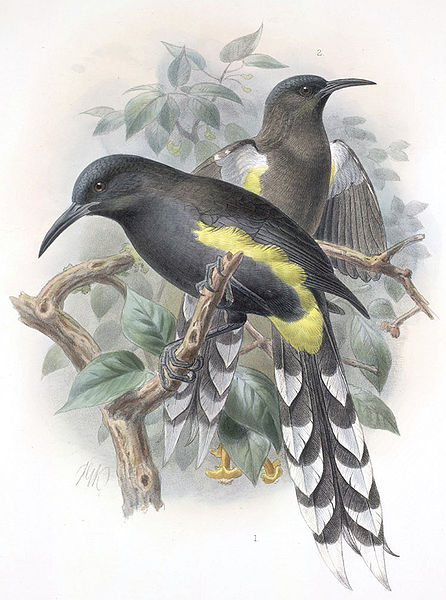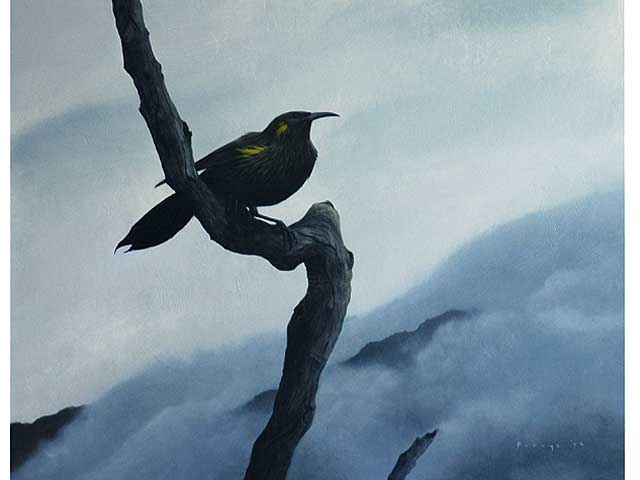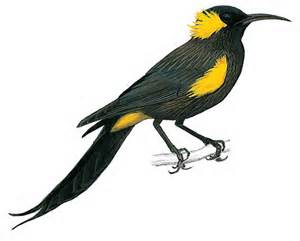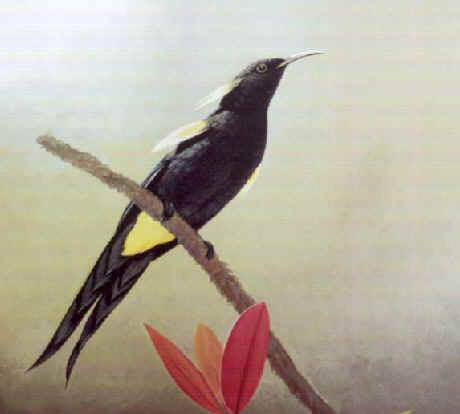
Moho bishopi
TAXONOMY
Acrulocercus bishopi Rothschild, 1893, Molokai Island, Hawaii.
OTHER COMMON NAMES
English: Molokai oo; French: Moho de Bishop; German:
Ohrbьschelmoho; Spanish: Oo Obispo.
PHYSICAL CHARACTERISTICS
12 in (31 cm). Smoky black neck, back, and underparts with
narrow white shaft lines on feathers. Wings and tail black.
Tufts of golden feathers at ear coverts, undertail, and axillary.
DISTRIBUTION
Maui Island, formerly Molokai Island, Hawaiian Islands.
HABITAT
Dense rainforest in mountains.
BEHAVIOR
Inquisitive but timid and alert. Very loud owow, owow-ow call.
The long graduated tail of male oos may have been used, along
with the yellow feathers on wing, neck, and tail coverts, to display
to the female.
FEEDING ECOLOGY AND DIET
Feed on nectar from lobelia flowers. Also take insects from upper
canopy.
REPRODUCTIVE BIOLOGY
Not known, but possibly a hollow nester like the Kauai oo.
CONSERVATION STATUS
Critically Endangered, last seen on Molokai in 1904. Rediscovered
on Maui in 1981. Probably wiped out on Molokai due to
HABITAT
loss and introduced malaria. Perhaps restricted to highest
parts of Maui due to introduced malaria in the lowlands.
SIGNIFICANCE TO HUMANS
Snared by native Hawaiians for its yellow plumes, which were
used for ceremonial cloaks.
Other popular Animals
Photo Gallery of - Bishop’s oo




 Animalia Life
Animalia Life